Review for Claymore - Collector's Edition
Introduction
My first inclination, when I heard that All the Anime was releasing Claymore on Blu-ray was to respond with an incredulous, “Huh?” After all, Manga Entertainment released Claymore on three feature packed DVD releases, followed by a complete series collection. Why would you need to re-release it again? Then I typed Claymore into a few e-tail websites only to find that the DVDs are getting scarce. They’re up to RRP or higher if you can find them new, and for one volume at least, second hand is your only option. If you want to buy Claymore for new, it was actually cheaper to import, so the timing for a Claymore re-release is perfect, and eight years down the line, it will find a whole new generation of anime fans.
The question as to why Blu-ray is still relevant though. After all, Claymore is one of those mid-2000s digipaint shows that were animated directly for SD NTSC. A Blu-ray is going to present nothing more than an upscale. On top of that, All the Anime are re-using the Funimation discs. And they are old, a transfer dating from 2010, back when Funimation hadn’t worked out the kinks in re-mastering old shows to Blu-ray. This was when they had to release Samurai Champloo twice on Blu-ray because they got the first release so wrong. You can bet I’ll be digging out the old DVDs to do a compare and contrast.
In a world where demonic Yoma prey on hapless humans, and can walk among them unsuspected, there is only one group who can stand against them, the Claymores. But Claymores are feared almost as much as the menace they stand against. They are half human and half Yoma, women all, who have made a drastic sacrifice in the name of vengeance. Claymores alone can sense Yoma, their tell-tale silver eyes turning gold when they find a foe to face in battle, and their altered physiology allows them to survive and heal from wounds that would kill lesser humans. But the more they fight, the more the monstrous half of their nature asserts itself, bringing closer the time when they too will become monsters to be hunted. Clare is such a warrior, accepting missions to kill Yoma and defend people who fear and despise her in return. But it’s when she rescues a young boy named Raki that her life begins to change.
All 26 episodes of Claymore are presented across 3 Blu-ray discs from All the Anime as follows.
Disc 1
1. Great Sword
2. The Black Card
3. The Darkness In Paradise
4. Clare’s Awakening
5. Teresa of the Faint Smile
6. Teresa and Clare
7. Marked For Death
8. Awakening
9. Those Who Rend Asunder I
Disc 2
10. Those Who Rend Asunder II
11. Those Who Rend Asunder III
12. The Endless Gravestones I
13. The Endless Gravestones II
14. To Be Qualified To Fight
15. The Witch’s Maw I
16. The Witch’s Maw II
17. The Witch’s Maw III
18. The Carnage in the North I
Disc 3
19. The Carnage In The North II
20. The Carnage in the North III
21. Invasion of Pieta I
22. Invasion of Pieta II
23. Critical Point I
24. Critical Point II
25. For Whose Sake
26. To The Successors
Picture
Claymore gets a 1.78:1 widescreen 1080i transfer at 60Hz. As part of my pre-rant research to justify my whinge at the lack of a progressive transfer, I learned something really quite interesting. Even in those native SD NTSC days when Claymore was made, this show was rare in that it was animated at 30 frames per second for NTSC broadcast, as opposed to the more usual 24fps that we expect in our progressive transfers. If Claymore was given the 1080p treatment, it would actually lose 6 frames of animation per second. What we get here is the best possible presentation it can get on Blu-ray.
The image is clear and sharp throughout, the animation is really quite smooth, with just the odd moment of judder, and thankfully no combing artefacts at all. This is an early Funimation Blu-ray, as evidenced by the subtitle font, and it was from a period back in 2010, when Funimation were more aggressive about their SD up-scales, applying all sorts of tricks like DNR, and edge enhancement to get them looking as faux-HD as possible. And Claymore lucks out again. I did a side by side comparison with my DVDs, and taking the NTSC-PAL standards conversion into account, the Blu-ray offers exactly the same line art and image detail as the DVD. Nothing has been scrubbed away; no detail or nuance has been lost in the up-conversion to HD.
The transfer we get here is a good one, it faithfully presents the show as well as it can on Blu-ray. There are absolutely no visible compression artefacts, and it looks as if rather than work from the DVD masters, Funimation had access to the original source, as we get beautiful, rich, deep and lush colour palettes in the animation, a whole world away from the comparatively dull and drab limitations of the DVD format. Madhouse Studios headed up the animation on this project and it tells in the final product. The character designs do take a bit of getting used to, but in the long run, the singular style and difference of the piece help it stand out from the crowd. Also the world design takes a leaf from Death Note’s book in terms of palette, mood and detail, although the animation is much better. It’s a very effective, moody and stylish animation, getting the balance between quirky individuality, and mass-market appeal just right.
The images in this review were kindly supplied by All the Anime.
Sound
Now this is a little disappointing. While dub fans will be happy with the Dolby TrueHD 5.1 Surround English track, fans of the original language will have to make do with the Dolby Digital 2.0 Stereo Japanese. It maybe up-rated to 640kbps, but it is still lossy. You get optional translated subtitles and a signs only track, and this being an early Funimation Blu-ray, they use the thin white font, which can get lost against busy backgrounds. I went for my usual option of the Japanese track and found an experience familiar from the DVDs with clear dialogue, nice music and pleasant action. I did sample the English dub, and it’s well acted with the characters suitably cast. It’s also worthy of the 5.1 track, as the sound is immersive, the action and sound effects are placed well, and there’s more than the usual level of sound design applied to this show, made all the better by the lossless format. Dub fans will have a lot to appreciate here.
Extras
The discs boot up to animated menus.
Disc 1 autoplays with a trailer for Trinity Blood.
You get a commentary for episode 1, with Stephanie Young (Clare), joining ADR director and voice of Raki, Todd Haberkorn. The second commentary accompanies episode 8, and is provided by actresses Brina Palencia (Priscilla), and Wendy Powell (Ilena).
Disc 2 autoplays with a trailer for Evangelion 1.11.
The commentary that accompanies episode 11 is here in its entirety, featuring line producer Colleen Clinkenbeard (Galatea), and Monica Rial (Miria). The Manga Entertainment release had a fault which cut the commentary off after 13 minutes. The episode 16 commentary features Laura Bailey (Jean) with ADR director Leslie Patrick.
Disc 3 autoplays with a trailer for Nabari no Ou.
The first commentary on this disc accompanies episode 19, and features Caitlin Glass (Deneve), and Jamie Marchi (Helen). The final commentary accompanies episode 26, and features Brina Palencia (Priscilla), and Stephanie Young (Clare).
You’ll find the textless credits here, as well as some Cast Auditions for Clare, Teresa, Rubel, Sid, and various Yoma. It all amounts to under four minutes of audio.
There is an interview with director Hiroyuki Tanaka, who squeezes in quite a lot of information into a 7:01 featurette.
The interview with sound director Yasunori Honda lasts 8:37, and he talks about the appeal of the show, the challenges of ADR for such a visceral anime, differentiating the various Claymore characters, and his favourite character.
The interview with Art Director Manaba Otsuzuki (Kusanagi) lasts 6:26, and in it he gives us his job description, as well as how much importance was placed on getting the lighting and the colour palette right for the show.
The interview with the man in charge of Art Setting, Nobihito Sue (Kusanagi) lasts 4:17, and he talks about the world designs and exterior and interior locations of Claymore. It’s interesting in that they have to deliberately draw things freehand to make them look mediaeval, avoiding pesky straight lines.
You’ll find the Original TV Commercials, 2 of them. Running to 7:04 in total, they come across more as promo reels, and they are a nice look at the series.
The textless credits alone on this disc are in 1080p. The archive interviews are in 480i.
Finally there are trailers for Strike Witches, Darker Than Black, Dragon Ball Z, Gunslinger Girl, D.Gray-Man, Soul Eater, The Tower of Druaga, and Shigurui Death Frenzy.
I haven’t seen the physical extras with this release or the packaging to comment.
Conclusion
Two gritty swords and sorcery shows in the space of a few weeks, both DVD classics getting Blu-ray re-releases and you know what? Both of them are well worth getting. Berserk is fantastic, a case of a classic show given a new lease of life by being having the original film re-mastered in HD. Claymore on the other hand is limited by the nature of the source material You’re only ever going to get an SD show, but it is a decidedly good show, regardless of the format. It’s a dark and violent fantasy, with an intriguing premise and a really well written story at its heart. It also has one more thing in common with Berserk, the disappointment of its ending. With Berserk it was that it just stopped after the Golden Age, leaving a whopping great cliff-hanger. Claymore is actually worse, in that the animators ran out of canon material to adapt, so they created their own ending, and the drop in quality is so sudden, so much of a plummet, that the last three episodes cause vertigo.
The most striking thing about Claymore is that it offers so much more than you would expect. After all, the description hardly does it justice, with women in form-fitting armour, carrying massive swords, and regularly despatching demons with oodles of blood and gore. Played to the lowest common denominator, it would have been a monster of the week show, with an emphasis on fan service and some comedy. Claymore eschews that and instead gives the story a much more serious and sharper edge. It’s the sort of treatment that moody adult shows get, where the protagonists are usually male, and there’s plenty of angst, soul searching and introspection among the characters. What’s refreshing about Claymore is that the protagonists in this case are all female, they are the strong, dominant characters, and the creators feel no need to make an issue of their gender beyond what the story dictates.
The story itself is fascinating. What could have been a simple good guys versus bad guys dynamic becomes infinitely richer when the good guys, in this case the Claymores, are themselves linked to the Yoma that they hunt. Indeed the only way they can match them in battle is to be part Yoma themselves. I must admit that when I learned that Claymores were half human and half Yoma that it did sound a little prurient, but the reality is even more unsettling, going beyond something as straightforward as cross species breeding. That they are part Yoma means that the Claymores are always in danger of becoming that which they hunt, indeed the implication is that it’s an inevitable transformation, and that by choosing to become Claymores, they knowingly sign their own death warrants. The background to the Claymores as revealed here is interesting as well, and we learn of a secretive and manipulative organisation, one that hides the truth from the general populace and even its own members. As those truths begin to be revealed, the story becomes all the more compelling.
Clare’s story is compulsive viewing, and the way that the episodes are structured makes it even more so. There are comparisons made to Berserk, but beyond the violent content and swordplay, I don’t find that to be justified. Berserk was very much about politics and character drama, while Claymore is a little more traditional an anime in its outlook. The one place that comparison is warranted is in the episode structure, with an introduction, followed by a scene setting flashback, then a return to the modern day. Berserk suffered from the whole series being the scene setting flashback, but in Claymore it works out well. We’re thrown into the deep end when we meet Clare as she takes on a Yoma in a village, then picks up a young stray who’s been exiled. Raki begins to have an effect on Clare, bringing out her human side and getting her in touch with her emotions again, which turns out to be essential when she faces a particularly tough Yoma that brings her close to the edge of losing her humanity.
All this time we’re fed snippets and hints of Yoma lore, and who the Claymores are. We then get four episodes of flashback, where we meet Clare as a child, a victim of Yomas, rescued by a powerful Claymore named Teresa. We learn why Raki has such an effect on Clare, as it transpires that she was in Raki’s shoes once herself, we see the effect that she had on her saviour, and we also learn ultimately why she became a Claymore herself. It isn’t a pleasant story, but it does in these four episodes tell us a lot more about the Claymores and the Yoma that they fight. Then comes what to me is Claymore’s masterstroke. We return back to the present day, with Raki and Clare continuing on their travels from village to village, but the show suddenly delivers the unexpected, turning everything on its head.
When we start the series and meet Clare, she is like a Terminator. She goes into town, hunts down and kills the Yoma, regardless of what damage it inflicted on her knowing full well that she’ll heal quickly, and oblivious to the hostility with which people view her. That begins to change when she meets Raki, who of all the people she encounters, doesn’t fear her, and even awakens something akin to protectiveness in her. But we still see her scything through Yoma, a lethal killing machine, and still pretty emotionless and aloof. The flashback hints that this isn’t the normal state of affairs when it comes to Claymores, and while Teresa was just as aloof, she certainly wasn’t cold, indeed there was a quiet humour to her interactions with the young Clare, and how she dealt with her foes. The other Claymores that we met at the end of the flashback were wildly different in personality as well, even though all of them were brutal killing machines.
But all of a sudden, when we return to Clare, and she encounters some fellow Claymores, we realise that far from being the perfect weapon, she’s actually the weakest and least skilled of the lot. The other Claymores all outclass her completely, and she’s like a backward schoolchild in comparison. It has the effect of shifting the playing field, and broadening the scope of the story, and it’s masterfully done, especially when we learn just why Clare is so deficient compared to the others. Incidentally, it’s a good thing that the various Claymores have such wildly differing personalities and abilities. The one criticism of the animation is that the character designs for the Claymores are all so similar. Admittedly when the physical traits of the Claymores call for them all to be warrior women with silver eyes and blonde hair, there’s very little you can do to differentiate them, but through character performance and writing, it actually becomes difficult to get them confused.
The immediate draw to Claymore might be the action, the gore and the horror aspects of the show, but you will stick around for the story, which is interesting and complex, offering revelations about character and plot that will keep you hooked. The conspiracy theory about the Claymore Organisation and the Yoma that they fight is the strongest element in the story, and it will make you lament that no more was animated. The downside is that the final three episodes take a complete dive in I.Q., the dialogue particularly takes a pummelling, and it might just leave a sour taste in the mouth when the end credits roll on that final episode. You just have to remember the journey to that point, rather than the destination itself, and you’ll realise that Claymore is one of the better action anime to come in recent years.
The Manga Entertainment DVD release is scarce, so if you’re looking to take a step into the Claymore world, this Blu-ray is ideal. Should you double-dip however? The video quality is a marginal improvement over the DVDs, even more so over the NTSC-PAL standards converted DVDs that we got in the UK. The colour palette is richer, there’s no visible compression, and the interlaced playback actually offers smooth and fluid animation. Of course the resolution is comparable to DVD. When it comes to extras you do finally get that third audio commentary in its entirety. As for audio, dub fans will be impressed with the lossless English, but there’s less of a reason to upgrade for Japanese audio fans. The improvement is marginal but it is there in Blu-ray, but you won’t be missing out too much by sticking to the DVDs.
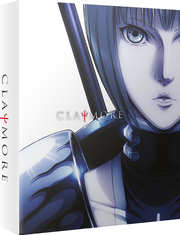



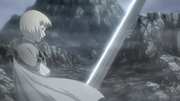
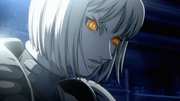


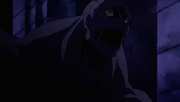


































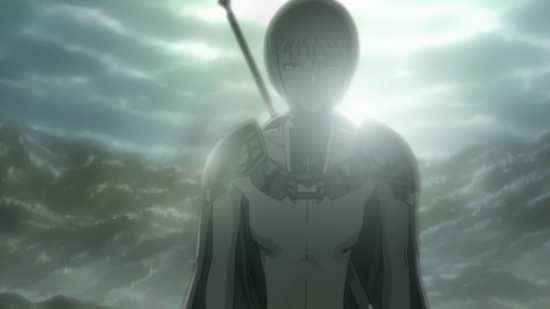
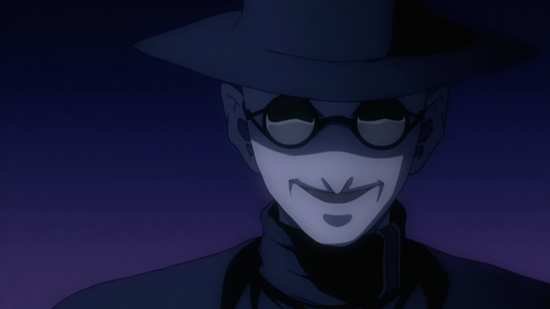



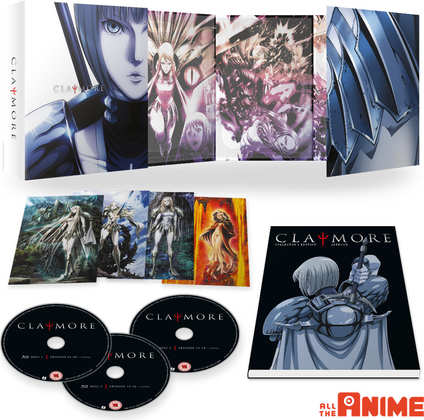
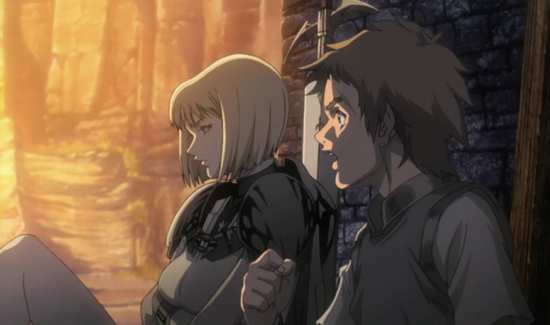
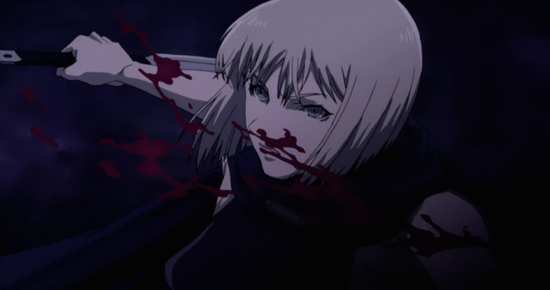


Your Opinions and Comments
Be the first to post a comment!